History of the BOA
The First One Hundred Years of the BOA: A Brief History
Ian Stephen
Honorary Archivist
The Foundation Dinner
On 28 November 1917, fifteen surgeons met for dinner at the Café Royal in London and resolved to form the British Orthopaedic Association. Handwritten minutes were kept: there is also a typed transcript and a menu card signed by all those who were present.
The Inaugural Meeting
On 1 February 1918, a temporary Executive Committee met and a formal proposal to form the Association was agreed. The Inaugural Meeting of the Association was held on 2 February 1918 at Queen Mary’s Convalescent Auxiliary Hospital in Roehampton. The handwritten minutes and typed transcript record that 12 Members were present for the business and clinical meetings and that there were 20 original members of the Association: a photograph was also taken to mark the event. The Chairman was E Muirhead Little, Robert Jones was the vice-Chairman and Harry Platt was the Secretary. The Journal of Orthopaedic Surgery became the official organ of both the British and American Orthopaedic Associations.
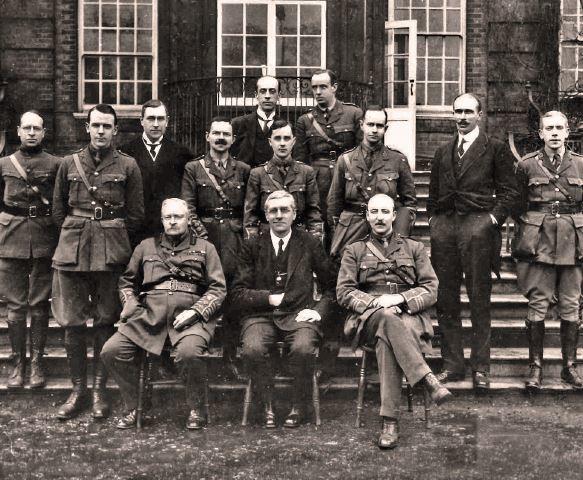
BOA First Meeting 1918
Events leading up to the Foundation
Orthopaedic Surgery had first emerged as a discrete discipline in the United Kingdom in the latter part of the nineteenth century and the American Orthopaedic Association was founded in 1887. In 1894 the British Orthopaedic Society was formed: it had 31 members and met four times a year, initially with printed transactions, but there is no record of further meetings after 1898. In 1913 Robert Jones was President of an Orthopaedic Section at the International Congress of Medicine in London, and in the same year an Orthopaedic Sub-section of the Royal Society of Medicine was formed, with E Muirhead Little as President. The First World War further stimulated the growth of Orthopaedic Surgery and Sir Robert Jones was knighted for his services to military orthopaedics in 1917.
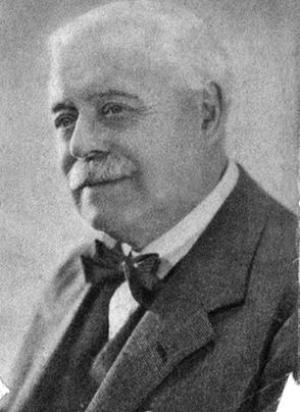
Sir Robert Jones
Post War Development and the National Orthopaedic Scheme
Once the War had ended, the Members of the Association drove the development of Orthopaedic Surgery in the United Kingdom. In October 1919 Robert Jones and G R Girdlestone published in the British Medical Journal a proposal for a National Orthopaedic Scheme for the cure of crippled children. In February 1921, all the patients from Agnes Hunt’s hospital in Baschurch were transferred to the new Shropshire Orthopaedic Hospital in Oswestry. Other specialist orthopaedic hospitals followed: in 1923 Biddulph Grange Orthopaedic Hospital in North Staffordshire was the first orthopaedic hospital for children to be provided by a public authority and in 1927 the Princess Elizabeth Orthopaedic Hospital opened in Exeter. Harlow Wood Orthopaedic Hospital opened in 1929, Winford Orthopaedic Hospital in Bristol in 1930 and Mount Gold Orthopaedic Hospital in Plymouth in 1933. The Orthopaedic Department opened at Manchester Royal Infirmary in 1934 and G R Girdlestone was appointed the first Professor of Orthopaedics in the United Kingdom, at Oxford in 1937.
International Connections
The international connections of the Association were important from the start. An American surgeon from Boston, R B Osgood was instrumental in the foundation of the Association. The Journal was a joint venture with the American Association from the beginning and the first joint meeting of the British and American Orthopaedic Associations was held in London and Liverpool in 1929. The first overseas meeting of the Association was held in Leiden in 1923. This was followed by a meeting in Bologna a in 1924 and in 1928 the Association visited the Hôpital des Enfants-Malades in Paris. The Société Internationale de Chirurgie Orthopédique et de Traumatologie (SICOT) was founded in 1930.
Awards and Clubs
Prestigious awards and social gatherings in clubs were both used to advance the orthopaedic cause, which was still resisted by some General Surgeons. The Robert Jones Gold Medal and Association Prize was inaugurated in 1924, with the first award to George Perkins and, in the same year, the first M.Ch.Orth. was awarded in Liverpool. In 1938 the first Robert Jones lecture was delivered by H A T Fairbank. The Orthopaedic Club was founded in 1919, but only lasted until 1925. In 1928, the Robert Jones Dining Club was founded and was much longer lived. Other clubs followed in the subsequent decades.
The Second World War
Inevitably, the onset of another global war further stimulated the development of orthopaedic surgery worldwide, and the United Kingdom was no exception. In 1939 H A T Fairbank was appointed Orthopaedic Adviser to the Ministry of Health in connection with the Emergency Medical Service and in 1940 Reginald Watson-Jones published his book ‘Fractures and Joint Injuries’: he was knighted in 1945 for his contribution to the RAF orthopaedic service. The BOA Memorandum on Fracture and Accident Services was published in 1942 and the Institute of Orthopaedics was founded in 1944.
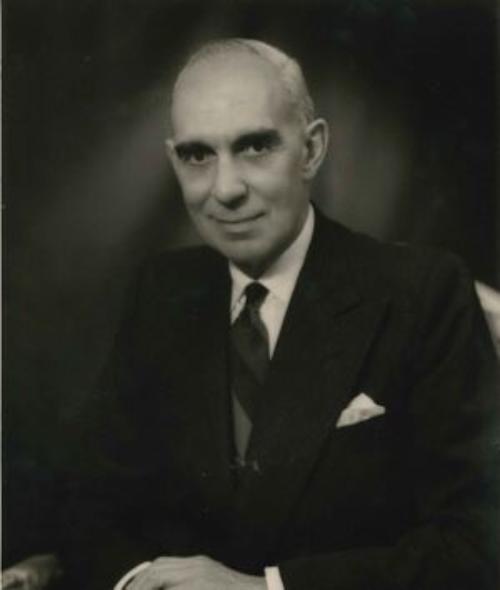
Sir Reginald Watson-Jones, BOA President 1952-3
The Post War Years
There was slow national recovery in the years after the end of the War, but Members of the Association continued to press forward the development of Orthopaedics. The National Health Service was introduced in 1948 and this was also the year that the British volume of the Journal of Bone and Joint Surgery was first published, under the editorship of Sir Reginald Watson-Jones. The Chairman and Editor of the Journal were appointed to the Executive Committee of the Association in 1949 and the British Editorial Society was formed to manage affairs of the JBJS(B) in 1953. Also in 1948 the second joint meeting of the American, British and Canadian Orthopaedic Associations was held in Quebec and there was the first visit of ABC Travelling Fellows to the United States and Canada, with the return visit of North American surgeons in 1949. In June 1952 the third combined meeting of the Orthopaedic Associations of the English-Speaking World was held in London, including, for the first time, the associations of Australia, New Zealand and South Africa.
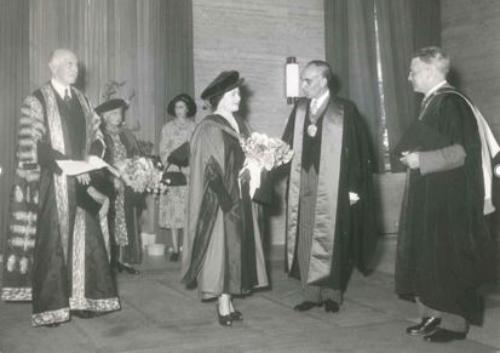
Her Majesty Queen Elizabeth, the Queen Mother being greeted by Sir Reginald Watson-Jones at the third Combined Meeting of the English-speaking Orthopaedic Associations. Major-General the Earl of Athlone, Chancellor of the University on the left.
Specialist Orthopaedic Hospitals
The development of specialist Orthopaedic hospitals continued after the War. In 1949 the Royal Cripples’ Hospital, Birmingham became Royal Orthopaedic Hospital and in 1952 an orthopaedic unit opened at the Royal Sea Bathing Hospital in Margate. In 1955 the Wingfield-Morris Orthopaedic Hospital, Oxford became the Nuffield Orthopaedic Centre and the Hip Centre at Wrightington was established by John Charnley in 1958. In 1959 the Association published a Memorandum on Accident Services and established a subcommittee on Specialist Orthopaedic Hospitals. The same year, the Platt report on Arrangements for the Welfare of Ill Children in Hospital was published and Roland Barnes became the first Professor of Orthopaedics in Glasgow.
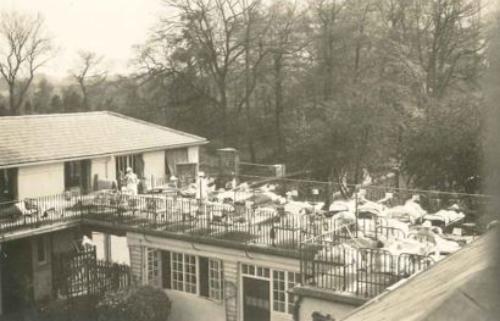
The Woodlands Royal Cripples’ Hospital, Birmingham renamed The Royal Orthopaedic Hospital in 1949
Membership of the Association
There has been a steady increase in numbers from the 20 original Members of the Association in 1918. There were 100 Members by 1924, 200 in 1928 and by 1943 the total had risen to almost 400. In 1947 the Membership fees were set at seven guineas for Fellows and five guineas for Members. Associate Membership for surgeons in training was introduced in 1948 and the Constitution of 1952 limited the number of Fellows to 150, elected from the Membership. In the same year, fees of £10 to £20 for companies exhibiting at the annual meetings were introduced. By 1968, fifty years after the foundation, there were over 1,200 Members and the registration fee for the Annual Meeting was £1. In 1993 there were over 2,600 Members and today the total is over 4700.
The Association Offices
The offices of the Association have always been associated with the Royal College of Surgeons of England in London, but there have been various moves over the years. In 1944 they were sited in 45 Lincoln’s Inn Fields, next door to the College, with an annual rent of £100. In 1956 there was a move to the third floor of the Royal College of Surgeons building itself. In 1994 the Association moved again to offices in the adjoining Nuffield College, which were refurbished using funds from the Cutner bequest, thanks to the efforts of Sir Rodney Sweetnam. Another move is now inevitable with the refurbishment of the Barry building and the vacation of the Nuffield Centre.
Relations with the Royal Colleges of Surgeons
As well as the physical association of the Association offices with the Royal College of Surgeons of England, there has been a steady increase in influence with all the Royal Colleges. Sir Harry Platt became a Council Member of the Royal College of Surgeons of England in 1940 and was the first orthopaedic surgeon to be President, in 1954. In 1991, the BOA was a founder member of the Federation of Surgical Speciality Associations, formed to give increased influence with the Royal Colleges. It was not until 1995 that Sir Rodney Sweetnam became the second orthopaedic surgeon to be appointed President of the Royal College of Surgeons of England, followed by Hugh Phillips in 2004: in the same year, Ian Ritchie was the first orthopaedic surgeon to be President of the Royal College of Surgeons of Edinburgh. Clare Marx was not only the first female President of the BOA in 2008 but went on to be the first female President of the Royal College of Surgeons of England in 2014.
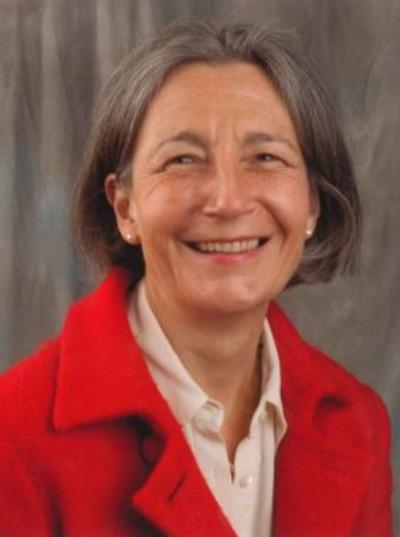
Dame Clare L. Marx, BOA President 2009
Wider Recognition
In 1930 Rowley Bristow produced the first BOA seal, but it was not until 1952 that the Association received a Royal Grant of Arms. In 1959, Her Majesty Queen Elizabeth the Queen Mother became the Royal Patron of the Association. In 1964 Sir Herbert Seddon was knighted. In the same year, the Department of Orthopaedics in Sheffield was inaugurated and Sir Frank Holdsworth was knighted in 1968. Sir Henry Osmond-Clarke from Manchester was knighted in 1969.
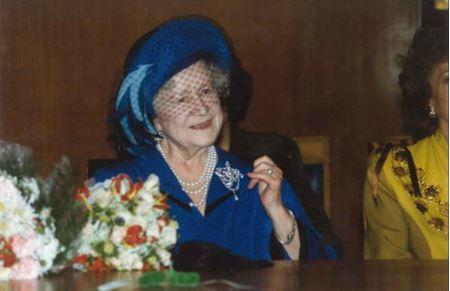
Her Majesty Queen Elizabeth the Queen Mother
Education and Research
The Association has been promoting education and research in orthopaedics since the foundation. The British Orthopaedic Research Society and the Naughton Dunn Orthopaedic Club were founded in 1963. In 1972 the first Annual BOA Instructional Course for Trainees was held and in 1974 the Advisory Bureau for Overseas Trainees was founded by the Royal College of Surgeons. In 1978 the inaugural meeting of the Association of Professors of Orthopaedic Surgery with thirteen members was held in Edinburgh. In 1986, the first Advanced Instructional Course for Consultants was held. In 1993, the Senate of Royal Surgical Colleges of Great Britain and Ireland was founded, and in 1996 introduced mandatory monitoring of Continuing Professional Development for surgeons.
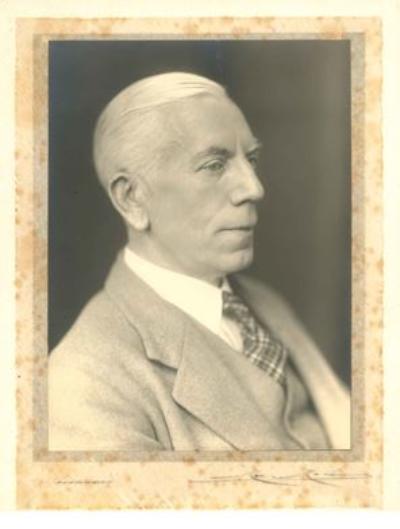
Naughton Dunn
Sub-Committees and Sub-Speciality Societies
In response to the increasing work of the association, sub-committees have been formed to concentrate on specific issues. As early as 1945, the Surgical Appliances Subcommittee was formed and by 1969 was stressing the importance of performance specifications for implants, including bone cements. At the same time, increasing sub-specialisation has resulted in the formation of a number of sub-speciality societies. In 1984 the British Scoliosis Society, the British Association for Surgery of the Knee and the British Orthopaedic Foot Surgery Society were the first sub-speciality Societies to become affiliated to the Association. In 1990 the Board of Affiliated Societies was established: this later became the Board of Specialist Societies. The British Orthopaedics Trainees Association was founded in 1986 and the British Orthopaedic Specialists Association (for Non-Consultant Career Grade Surgeons) in 2003.
Fund Raising and Communication
In 1938 the BOA Benevolent Fund was established for the benefit of members and their families who were in financial difficulty. In 1989, the Wishbone Appeal was established, later to become an independent Trust, to raise funds for orthopaedic research and the first Great Hip Walk was held. In 2003 the Wishbone Trust was succeeded by the British Orthopaedic Foundation. In 2007 Joint Action was adopted as the formal fundraising arm of the Association.
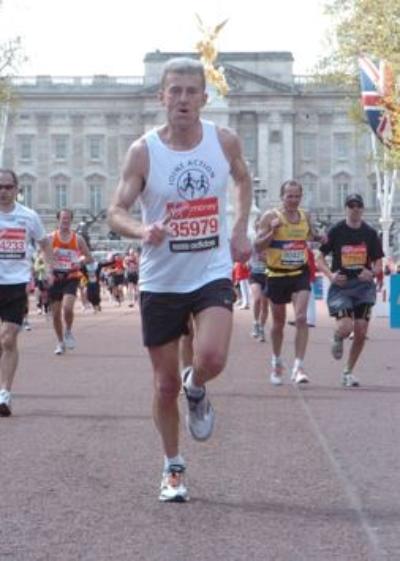
Participant at a Joint Action Challenge Event
The 75th Anniversary
1993 saw the 75th anniversary of the foundation of the Association and the publication of ‘A History of the British Orthopaedic Association’ by William Waugh. In 1992, the Spring and Autumn meetings of the Association were replaced by a single Congress, held in the autumn, with occasional spring meetings for special events. In 1998 the first Howard Steel Lecture was delivered at the Congress in Dublin.
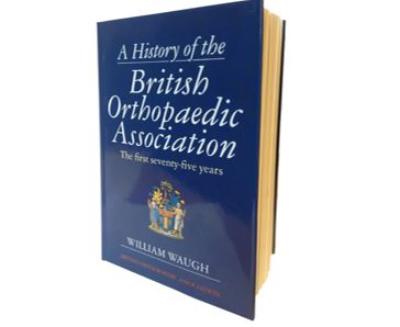
'A History of the British Orthopaedic Association: The first seventy-five years' by William Waugh
Publications and Website
In 1989 British Orthopaedic News was first published by the Association, with Chris Ackroyd as Editor. It was replaced by the Journal of Trauma and Orthopaedics in 2012. The 50th anniversary of the first publication of the British edition of the Journal of Bone and Joint Surgery was in 1998: it split from the parent body in 2013 and became the Bone and Joint Journal. In the same year, the BOA website went online for the first time.
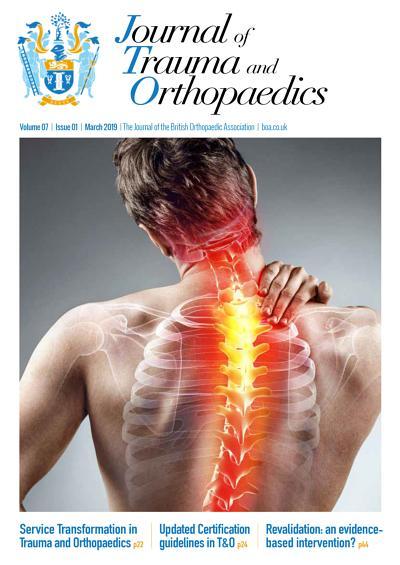
Journal of Trauma & Orthopaedics, March 2019
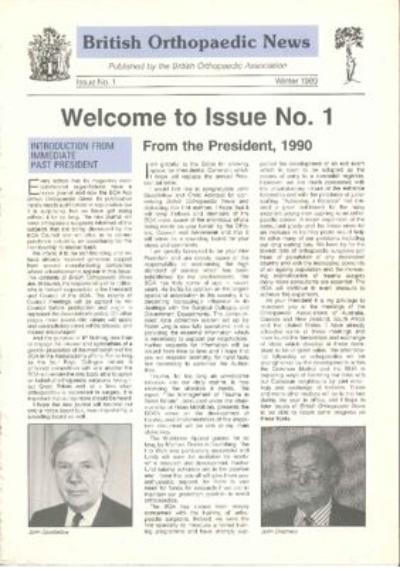
The first issue of the British Orthopaedic News, Winter 1989
National Influence
There has been a pattern of increasing national influence as the Association has grown in size and it became clear that more information about numbers was required in order to argue for the needs of orthopaedic surgery with the Department of Health. In 1986, an Orthopaedic Regional Adviser was appointed in each region and Orthopaedic Linkmen were appointed in hospitals to assist in data collection. In 1989 the Association published ‘The Management of Trauma in Great Britain’ and an ‘Advisory Booklet on Consultant Orthopaedic and Trauma Services’. In 1992, the Association organised the first census of orthopaedic manpower in the United Kingdom: this became an annual event, at the instigation of Fred Heatley, in 1994. In 2003 the National Joint Registry began operation and in 2009 Keith Willett was appointed as the first National Clinical Director for Trauma Care. Where once Government Departments would approach the Royal Colleges of Surgeons for advice on matters concerning trauma and orthopaedics, they now come directly to the Association.
International Influence
The Association has had important international influence since the foundation, and this has been maintained. In 1972, the Association was a founder member of the Monospecialist Orthopaedic Section of the Union Européenne de Médecins Spécialistes (UEMS) and sent two representatives to the first meeting. In 1977 the Association became a representative on the Coordinating Committee of Orthopaedic Associations of the Common Market (COCOMAC) and World Orthopaedic Concern (WOC) was established. In 1993, the first meeting of the European Federation of National Associations of Orthopaedics and Trauma (EFORT) was held in Paris at the instigation of Michael Freeman and Jacques Duparc. George Bentley became President of EFORT in 2004 and the Annual EFORT Congress was held in London for the first time in 2014.
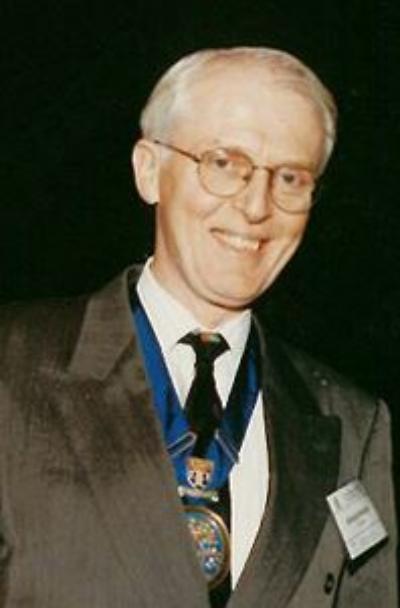
George Bentley, BOA President 1992 became EFORT President in 2004
Constitution and Officers
Charitable status was established in 1962 and in 1997 the Association became a Company Limited by Liability with the publication of a new Constitution and Rules. In 1974, John Fairbank held the first one-year Presidency of the Association and in 1980 the Executive Committee was renamed Council. Margaret Bennett was Senior Administrator of the Association from 1967 until 1989, when David Adams was appointed as Senior Administrative Officer. He retired as CEO in 2010 and was succeeded by Mike Kimmons.
Conclusion
I am privileged to have joined the list of the five Members who have acted as Archivist to the Association since 1953. The Archive contains many documents, photographs and material that record the history and development of the Association over the past hundred years. In 1953, the contents of the Archive were listed on two typewritten sheets. They now occupy several cupboards and filing cabinets and are listed on a digital catalogue, which is almost complete. I hope that it will be possible to publish the catalogue on the website before too long.
